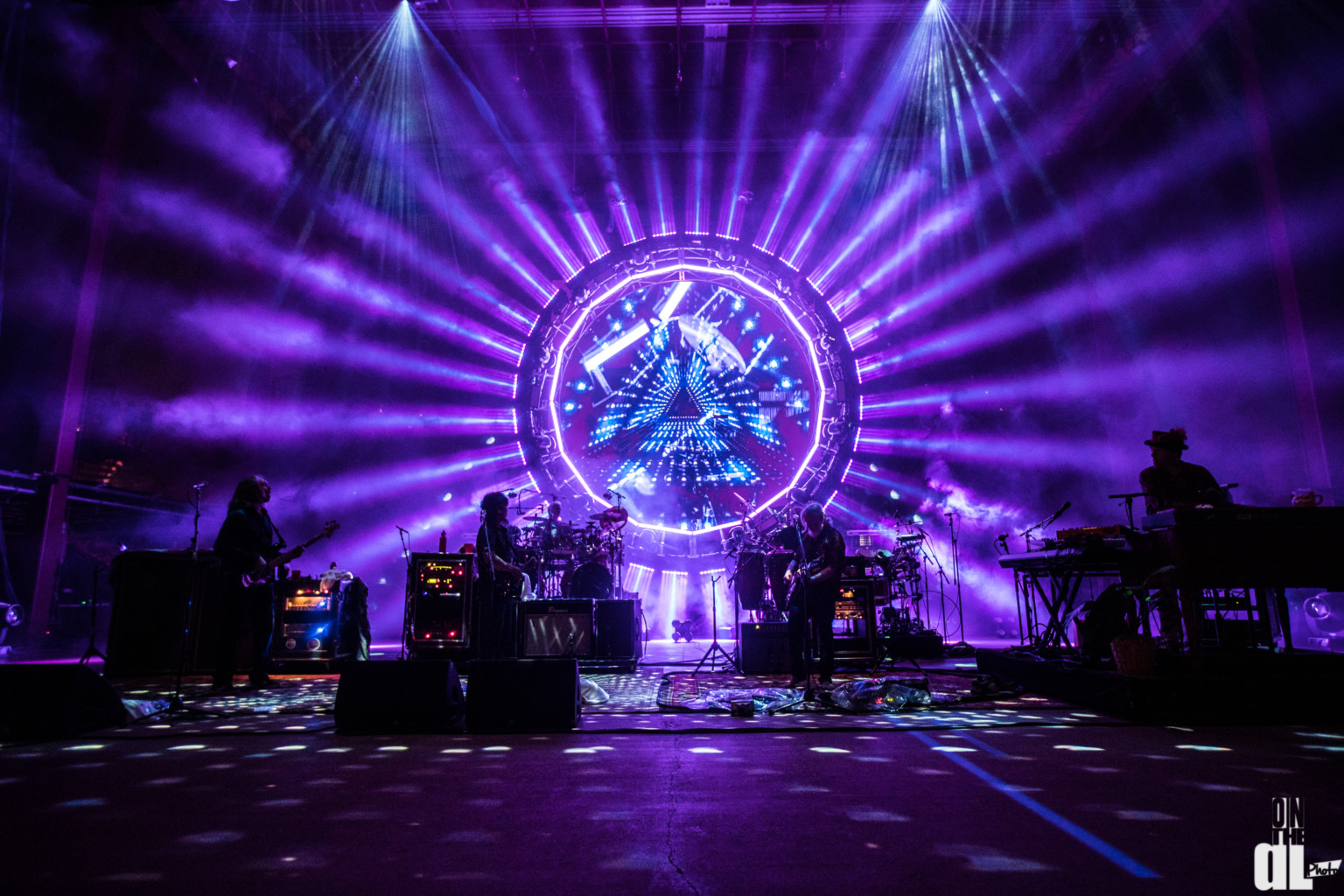The Local newsletter is your free, daily guide to life in Colorado. For locals, by locals.
The goal of any jam band lighting designer is to facilitate unforgettable moments for the audience—when the band reaches a crescendo and the lights play along perfectly, there’s nothing like it. That’s Andy Cass’ job. The Denver resident and lighting designer for String Cheese Incident is in the business of making music visual and helping create a transformative concert experience that will keep fans coming back for more.
And come back they do. Despite an absence of radio hits, record sales, or mainstream recognition, jam bands have built devoted fan bases on the idea that no two live shows are identical. When String Cheese Incident steps on the stage at Red Rocks Amphitheater on July 20—they play three nights in Morrison—the setlist will be planned, but the jams will be manufactured in real time, like a musical conversation. It’s Cass’ job to follow along and anticipate what the band will do next.

It’s no simple task, but it has gotten easier over time. After working on hundreds of jam band shows and attending hundreds more as a fan, Cass knows, instinctively, when the musical tone or focus will shift. That’s vital when it comes to “punting”: LD lingo for improvising with the band. Each show is structured both with set programming, called “cue stacks,” and blank spaces to punt while the band jams. Cass’ goal, on the lighting front, is that nobody can tell the difference between the two.
In this niche community of jam band lighting designers—Cass estimates there are only 15 in the country—all lights shine back to Chris Kuroda, the longtime Phish LD. Often regarded as the band’s fifth member, Kuroda imagined Phish concerts as a blurring of the senses, with audience members “seeing” music through his light shows. He shot his colorful beams through clouds of fog (Cass likens the effect to “painting the air over space”) and would often punt the entire show, start to finish. “He had a different concept of doing this,” Cass says. “Not just the improv part of lights, which he was early at. More what we call aerial architecture, or showing a beam in the air.”
Cass saw his first Phish show on December 11, 1997, in Rochester, New York. He was 16 and, like many “phans,” quickly became obsessed with the band. Later, he took notice of Kuroda and the perfectly timed, off-the-cuff lights. Cass decided he’d punt like Kuroda, tour with his favorite bands, and—better yet—be known by the fans. After interning with Boulder’s SCI Fidelity Records in the early 2000s, he moved to the Front Range and practiced programming lights on a free software he downloaded. Cass would stream a Phish show and try imitate Kuroda’s lighting—conceiving challenges, conquering them, and repeating the process. Now, when wide-eyed hopefuls ask Cass how to do it, “I tell them, ‘Download this software—called GrandMA2—and get started.’ I’ll see you in three years.’”
Cass has been lighting shows for String Cheese Incident since 2014, and Kuroda’s vision persists: fog machines provide a base layer of haze, then Cass creates the likeness of beams shooting into the crowd. “There’s a physicalness and expressiveness to light,” says fellow designer Marc Janowitz, who’s done work with My Morning Jacket and acted as something of a mentor to Cass. “It has a musical nature, and elements of it are utilized to create mood and express drama—to heighten and elevate what the audience gets from the music.”
Janowitz was an established lighting designer when he met Cass, then a keyboard tech with Matisyahu. “For the first six months he was pulling on my sleeve telling me he was a lighting designer,” Janowitz recalls, and eventually he pulled Cass onto lighting projects. They discussed how colors play with mood and how to evoke emotion with nothing but light. The mentor sees his role as enhancing and emanating what the band is already creating. “If it’s anything more or less,” he says, “it’s a failure on both fronts.”
Cass estimates he’s already worked about 40 shows at Red Rocks. While the iconic amphitheatre provides an unmatched acoustic experience, it also carries an extraordinary challenge for lighting designers. It’s steep. It’s windy. The beam definition falters as the haze blows away. (An indoors show might include two fog machines, but Cass brings around 18 to Morrison.)
A 3D rendering of the amphitheatre allows Cass to program an entire show on his computer, not that it makes the task any easier. On Friday, he’ll be in Morrison just after sunrise, around 6 a.m., preparing for the three-night stint. He’ll make sure the lighting rig faces up with the crowd and the fog machines find equilibrium with the wind. He’ll do his best to paint the air. And he’ll wait for those moments—the band jamming itself to a crescendo, Cass punting along—when the lights hit just right.













